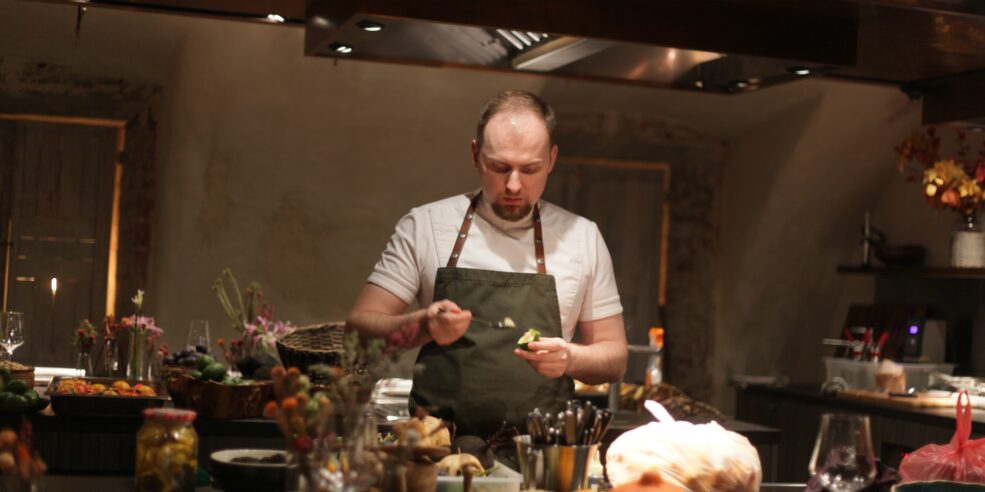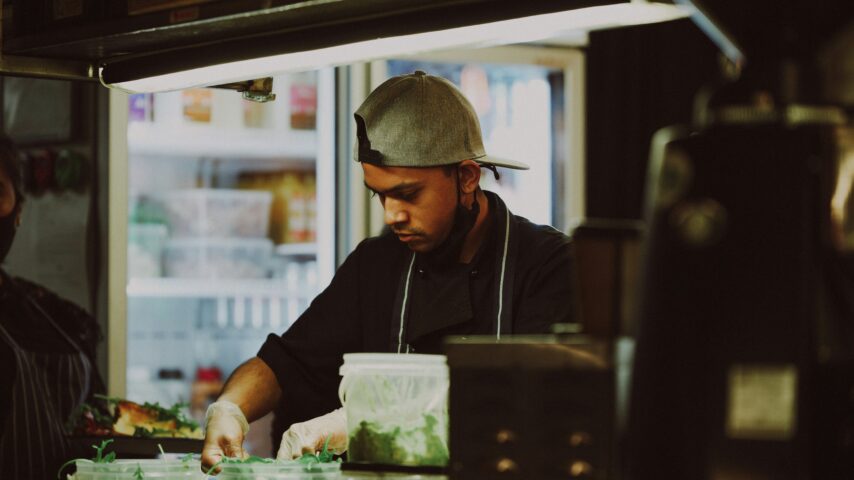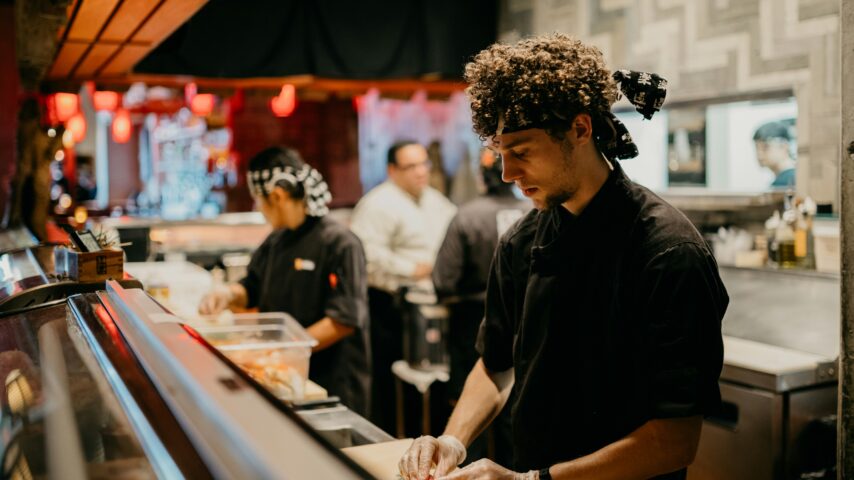In this article
- It's Easy to Get it Wrong: Mistakes in Inventory Costing
- The Start: Calculating Inventory Valuation
- The Methods of Food Costing
- Net Profit and Inventory Valuation
- Choosing the Right Inventory Valuation Method for Your Restaurant
- Inventory Management and Inventory Costing
- Automating Labour-Intensive Inventory Management Tasks
Much of a restaurant’s value is in its inventory. Inventory valuation is also a major factor in calculating your net profit. But how do you calculate the substantial investment represented by inventory? And how does inventory value apply to your profitability? And how do you do it most accurately?
The answers lie in the choice of your costing method. There are various tried and true methods of inventory valuation and food costing methods that are widely recognized as effective.
It’s Easy to Get it Wrong: Mistakes in Inventory Costing
There are effective costing models, but many restaurants make inventory costing mistakes, like:
- Ignoring waste, spoilage, and theft: restaurants relying on manual inventory management may miss waste, spoilage, or theft when calculating inventory costs, leading to incorrect inventory counts and inaccurate profitability estimates.
- Incomplete inventory counting: failing to account for ALL inventory items when calculating costs leads to inaccurate inventory valuations.
- Using inaccurate data: using outdated, incorrect inputs, or inaccurate cost data when calculating inventory costs leads to inaccurate inventory costing.
To avoid these mistakes, managers need to be sure that they are accounting for all inventory items, accounting for waste, spoilage, and theft, using up-to-date and accurate data, and correctly applying the most appropriate inventory costing model. And as any veteran restaurant manager knows, regular physical inventory counts are required to compare and reconcile inventory on-hand with the theoretical inventory on the books. Accuracy is a necessity.
The Start: Calculating Inventory Valuation
Restaurant inventory valuation is the process of assigning monetary value to a company’s products. In a restaurant that means the items on the menu.
Inventory is the stocktake, food, and ingredients in your storerooms, fridges, and freezers. When it comes to inventory valuation, however, everything that goes into making a menu item is taken into account. The total calculation needs to take into account:
- Overhead cost: labour, utilities, technology, advertising, marketing, and other budget items that keep your restaurant running.
- Food cost: your food cost is what’s sitting on your shelves, fridges, and freezer.
- Direct materials: what other materials are needed to make each dish? This includes the average cost of kitchen equipment, cooking utensils, and plates.
Delivery cost: If you offer delivery service, the cost of food prep for travel, delivery drivers, and gas should be factored into your inventory valuation, as well.
The Methods of Food Costing
To know the cost and value of your food inventory, you obviously need to know first what’s in your inventory. After that, use your chosen food costing model. There are common ways to determine inventory value. The best one for your restaurant will depend on the kind of inventory you carry and your business model.
WAC
The weighted average cost of inventory is determined by the total cost of goods sold (COGS) divided by the number of goods in inventory.
To figure out your inventory cost using WAC, take a look at your inventory software solution. Find the cost of each food or ingredient, and then divide it by the amount of that item in your inventory.
This gives you a more consistent value of your stocktake, rather than a value based on when the goods were purchased.
To calculate WAC, calculate the average cost of each item by dividing the total cost for that category by the number of items you have in that category.
If your restaurant bought 10 lbs of apples at $.060 per lb on Monday and then bought another 10lbs on Friday at $0.65 per lb, calculate your valuation using the oldest price up to the point of the price change.
So, the weighted average cost for all the apples you have would be:
(10 x 0.60) + (10 x 0.65) = $0.63
FIFO
With First In First Out, ingredients with the latest expiration date are used first. With the continuing rising cost of food, this means a restaurant is spending more, but the financial burden is minimized because there is less food waste.
The formula for the FIFO method looks like this:
Cost of Oldest Inventory per Unit x Units Sold
If your restaurant bought 10 lbs of apples at $.060 per lb on Monday and then bought another 10lbs on Friday at $0.65 per lb, calculate your valuation using the oldest price up to the point of the price change.
LIFO
The Last In First Out method isn’t quite as popular unless the business model uses a large stock of non-perishable goods. With LIFO, older items cost less to purchase, so using more expensive newer items and valuing them at cost offsets those expenses.
Calculating LIFO is simply a matter of tweaking the FIFO formula:
Cost of Newest Inventory per Unit x Units Sold
If you bought 20 cans of tomato sauce at $2.00 per can last month and the same amount at $2.50 per jar this month, you would work backwards, using the more expensive price until the date the price went down.
Inventory Replacement Cost
With this method, the cost is assigned by the amount of money spent to replace items in your inventory. This number fluctuates frequently, depending on the market.
Specific Identification Costing
This method tracks the cost of each item of inventory. This method is usually used for high-value items or items with unique characteristics, such as fine wines or speciality cheeses.
Net Profit and Inventory Valuation
The food costing and valuation method you choose has a direct impact on net profit. If you choose the FIFO method, for example, you may have a higher net income because you’re selling the goods that cost you less money first but selling them at current market prices. On the other hand that also gives you more taxable income.
Choosing the Right Inventory Valuation Method for Your Restaurant
FIFO is the one most used by restaurants, particularly for those with a menu focused on perishable goods. This method enables a reduction in food waste and maximizes the cost efficiency of their stocktake, which can offset higher taxes.
LIFO is less popular, simply because it usually doesn’t suit many restaurants’ business models. Most restaurants do not use more non-perishable items than perishable ones.
The WAC method may be a good fit for restaurants that deal with a consistent, high-volume inventory. This model often creates a clearer picture of each item category without spending time figuring out the cost of each item while considering current market value.
When owner/operators apply their inventory valuation method – whichever one they use – a deep understanding of what’s in inventory is required to start. How much does each item cost and what are the costs associated with each menu item? How much of each item do you sell and how much sitting inventory do you have?
Effective inventory valuation is deeply tied to best practices in inventory management.
Inventory Management and Inventory Costing
It’s estimated only 50% of restaurants use back-of-house automation to make tedious and time-consuming tasks like inventory management more efficient. That means 50% of restaurant managers are relying on spreadsheets and checklists and that weekly “inventory tour” of the fridges, stock rooms, and shelves.
Inventory is time-consuming. And tedious. IT. IS. A. CHORE. But it is a fundamental task for food costing. Automating inventory management can help optimize inventory costing. Streamlining and simplifying inventory management reduces the risk of errors and provides real-time analytics into what impacts profitability.
Automating Labour-Intensive Inventory Management Tasks
Inventory costing can be improved by more accurate inventory management. Manual inventory management can be difficult and error-filled. In fact, restaurants can reduce inventory mistakes and overstocking by 17% by implementing an inventory management application.
Here are some ways replacing manual inventory management with an automated inventory management software platform can help:
- Automated tracking of inventory levels: automatically tracks inventory levels by monitoring sales, purchases, and production, eliminating manual tracking and reducing the risk of data entry errors.
- Intelligent Inventory data: provides real-time data and business intelligence on inventory levels, costs, and usage, and can help managers make more informed decisions about purchasing, pricing, vendor selection, and cost control.
- Automatic inventory costing: flexibly calculates inventory costs using various methodologies, such as weighted average cost, first-in, first-out, or last-in, first-out. This can save labour time, reduce the risk of errors, and increase profitability.
- Integration with other systems: inventory management systems can integrate with other systems, such as front-of-house point-of-sale platforms and accounting software, to provide a real-time picture of inventory levels, costs, and sales.
- Ease labour shortage pains: Software as a Service (SaaS) and the appropriate restaurant technology allows restaurant managers to do more with less – eliminating profit-draining manual and time-consuming tasks. The reality is that automated inventory management can cut hours off a manager’s weekly inventory.
- Easier vendor management: generates automated purchase orders when inventory levels fall below a certain level, which can streamline the ordering and replenishment process and ensure that inventory is always stocked.
Inventory management platforms provide business intelligence in real-time and help restaurants save time, reduce errors, and make more informed decisions about inventory costing, purchasing, and cost control. By using an inventory management system, restaurants can improve their inventory costing processes and maximize profitability.
MarketMan is an inventory management platform that helps restaurants keep costs under control and efficiently manage inventory by automating back-of-house operations. MarketMan’s cloud-based inventory management and purchasing solution simplifies all back-of-house operations, streamlining everything from inventory to budgeting, reporting, and supplier management. MarketMan empowers restaurants to: save time, save money, and gain control.




